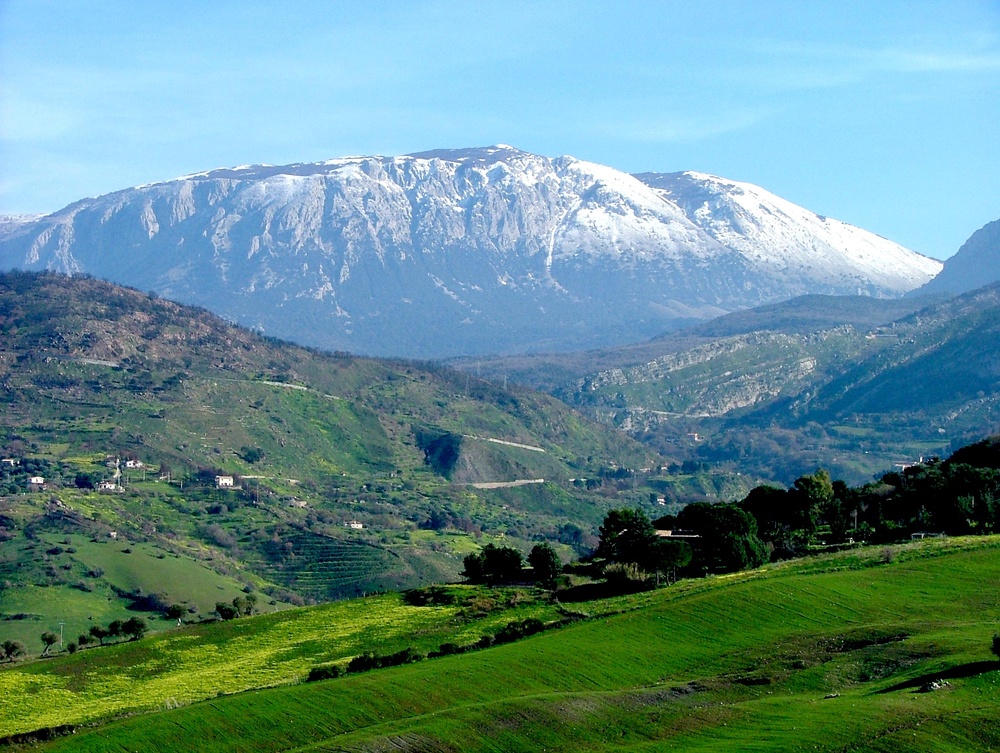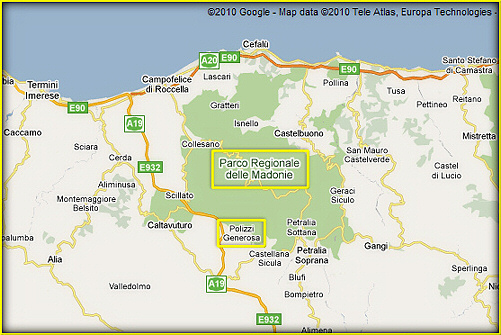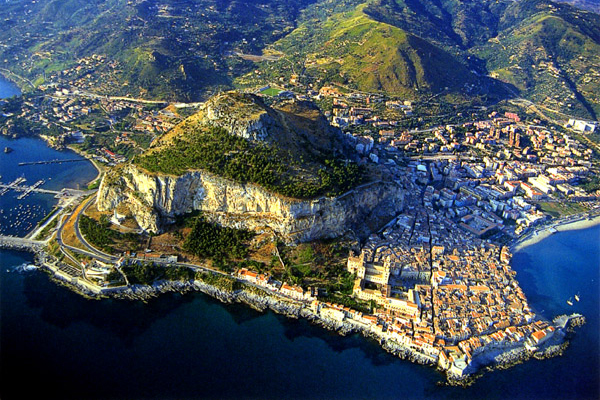
Madonie Park
This post is also available in:
 Italiano (Italian)
Italiano (Italian)
This park includes fifteen municipalities in the province of Palermo: Caltavuturo, Castelbuono, Castellana Sicula, Cefalù, Collesano, Geraci Siculo, Gratteri, Isnello, Petralia Soprana, Petralia Sottana, Polizzi Generosa, Pollina, San Mauro Castelverde, Scillato, and Sclafani Bagni.
The most natural areas of the Madonie Park are the mountain territories, much of which are covered by woods, garrigue, bushes and pastures rich in herbaceous and shrubby plants.
There are several species of endemic plants, which grown exclusively in the Madonie Park or in Sicily; the best-known endemism is that of the Nebrodi fir (Abies nebrodensis) – very similar to the Etna milkvetch (Astragalus) and growing above 3.937 ft of altitude.
The area between 1.312 and 328 ft above sea level features a temperate Mediterranean climate vegetation, mostly holm oaks, along with heather, spiny broom, rock roses and strawberry trees.
A fair surface of the Madonie park is covered by evergreen and deciduous woods: tree groves typical of the Mediterranean area of some parts of Central Europe. The most common species are holm oaks, downy oaks, cork oaks, hollies, common oaks and beeches.
It’s also worth mentioning the holm oaks of Monte Quacella, where this typical Mediterranean species grows among beeches, which are quite common in Central Europe. This is quite unusual as, in general, between holm oak and beech woods there are always deciduous oaks or other plant species like hollies and mountain elms.
The cork hoak, like the holm oak, is a typical Mediterranean tree that grows between 131 and 3.280 ft in the Madonie Park, sometimes mixed with holm oaks and downy oaks; the latter mostly grow in a belt ranging from 1.312 to 3.937 ft above sea level, often associated with other species.
Holly, a tree that can reach 50 ft in height (such as the exceptional nucleus of Piano Pomo), represents an evergreen species usually growing between Mediterranean holm oak woods and beech groves – it’s also often associated with oaks and mountain elms.
In the area between 3.280 and 4.921 ft above sea level, there’s a particular type of vegetation, officially called “colchic belt” (after the Caucasian Mountain flora well represented here). It is a partly evergreen forest with a humid climate dominated by hollies and oaks, associated with field maples, mountain elms, Sicilian hawthorns, wild apple trees, butcher’s brooms, spurge laurels, and deciduous species such as turkey oaks, downy oaks, beeches, and Sycamore maples.
In spring, the abundance of water boosts an impressive vegetal growth. The dominant colors are the green shades of clovers, vines and wheat, the red sparks of the Italian sainfoins (Sulla coronaria), and the Spanish broom yellow along the waterways.
In the rupestrian and higher areas of the Park, flowering occurs only between the end of May and June, with orchids, peonies, dog roses and wild lilies. With the first spring sun, the white flowering heather surrounds almond pear trees and wild blackthorns. And again, there are the pink shades of asphodels, a weed species with a wild charm.
In autumn, within the scrub and under the large oaks, strawberry trees, mountain ashes and azaroles finally bear their fruits.
Regarding human activities, there are three main areas of the agricultural landscape: the hilly one among Scillato, Campofelice, Lascari, and Cefalù, with citrus crops, vine and ash (Fraxinus oxycarpa) cultivations between Pollina and Castelbuono, and finally the mountain area where olive cultivation is quite widespread and cattle are bred and fed – those activities actually take place on the edge of chestnut (Castanea sativa), oak and beech woods. The cultivation of hazelnuts, in particular, is strictly limited to the area of Polizzi Generosa.
This post is also available in:
 Italiano (Italian)
Italiano (Italian)
Contatti
Corso Paolo Agliata, 16 - Petralia Sottana(PA)
0921 684011
parcodellemadonie@pec.it


